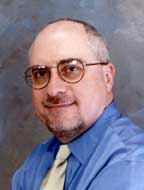Dear Reader,
Welcome to the archive of the June, 2004 issue of Pharma Marketing News!
- Vol. 3, No. 6: June 2004 – CONTENTS
- ePrescribing: What Role Should Pharma Play?
- eDetailing Strategies for a Higher Physician Response
- The New Branding Model: From Blockbusters to Targeted Therapies
Upfront
Pharma eMarketing: A Level Playing Field or a Killing Field?
In June 1998, I started the PHARMA-MKTING online discussion group to “promote the discussion of emerging interactive strategies in the marketing of pharmaceuticals.” Since then, there has not been much increase in the percent of the pharma industry’s marketing budget spent on ePromotion. Numbers from the fourth quarter of 2003 indicate that pharma ePromotion may even be losing traction (see “eDetailing Strategies for a Higher Physician Response” in this issue).
So why is pharma so conservative when it comes to using technology for marketing purposes? Focusing on ROI is a red herring. I don’t think it’s about money at all! Not directly, anyway. It could just be that using technology-especially the Internet-may have risks that, in many cases, outweigh the benefits. I am not talking about risks to a product manager’s career, which is a valid concern, but risks to the industry itself.
Take ePrescribing as an example. As this month’s articles point out, there are some good reasons why the pharma industry may not be very gung ho about this technology or at least why it is prudent for the industry to take a “wait and see” attitude.
As with many other Internet and digital technologies, ePrescribing has the potential to change the status quo. That is, it can “level the playing field” and empower the “small guy” as much as the “big guy.” The Internet, for example, has empowered patients by giving them unprecedented access to medical information, thereby altering the balance of power between patients and physicians.
Similarly, ePrescribing can alter the balance of power between managed care and pharma at the point of care. Quite simply, managed care organizations can move drugs quickly on and off formularies and instantly enforce these decisions through ePrescribing applications. Physicians may have issues with formularies, but according to a Harris Interactive survey, 45 percent of physicians using ePrescribing said that it has a major impact on their compliance with formularies. Thus, managed care can leverage the technology to put more pressure on pharmacos to lower drug prices.
To be sure, pharma can also take advantage of ePrescribing to push marketing messages out to physicians at the point of care, which is an enticing benefit (see “ePrescribing: What Role Should Pharma Play?” in this issue).
Speaking of war and his doctrine for waging it, General Colin Powell once said in an interview, “I’m on the street corner, I got my gun, I got my blade, I’ma kick yo’ ass.” Pharma has its own Powell Doctrine when it comes to the drug marketplace. On the street that pharma roams, however, sales reps are their guns and DTC ads are their blades. A pharma company can win its war by increasing these things, not by stepping out onto the digital “level playing field,” which may become a killing field.

![]()
John Mack, Publisher and Editor
editor@pharmamarketingnews.com
Article Summaries
FEATURE ARTICLE
Ready or Not: Gearing Up for the Expansion of ePrescribing
By John Mack
In a keynote address at the ePharma Summit conference held on May 10-12, 2004, in Philadelphia, PA, Kevin Hutchinson, CEO & President of SureScripts, a company founded by the National Association of Chain Drug Stores (NACDS) and the National Community Pharmacists Association, looked at the changing landscape and inevitability of electronic prescribing (ePrescribing or eRx) and the implications and opportunities for the pharmaceutical industry.
Topic headings:
- Telephone and FAX Burden of Traditional Prescribing
- ePrescribing Defined
- What’s Driving It?
- Adoption by Physicians is Lagging
- Barriers to Adoption
- At the Tipping Point?
- What are the Critical Next Steps?
Order the REPRINT now for $9.95 (PDF file delivered to you by email):
CONFERENCE HIGHLIGHT
ePrescribing: What Role Should Pharma Play?
By John Mack
For pharmaceutical manufacturers, ePrescribing is both a threat and an opportunity. The threat comes from the increased rate of generic prescribing and loss of leverage due to better formulary adherence. The major opportunities are from improved drug regimen compliance and access to real-time data.
A panel entitled “What Role Should Pharma Play in ePrescribing and the Point-of-Care?” at the ePharma Summit conference held on May 10-12, 2004, in Philadelphia, PA, discussed the issues facing pharmaceutical companies as electronic prescribing (ePrescribing or eRx) threatens to upset the “balance of power” between physicians, pharma companies, and payers at the point-of-care (POC) .
Topic headings:
- Questions for Pharma to Ponder
- Appropriate Messaging
- Best Practices
- Benefits to Pharma
Order the REPRINT now for $6.95 (PDF file delivered to you by email):
CONFERENCE HIGHLIGHT
eDetailing Strategies for a Higher Physician Response
By John Mack
In 1996, when the sales rep expansion was just starting, adding a drug rep to the sales force would yield 750 doctor calls per year. In 2000, this number dropped to just 17 calls per year per added rep (Credit Suisse/Scot Levin, 2001). “Clearly,” says Croom Lawrence, Marketing Manager at Wyeth Pharmaceuticals, “we are passing the point of diminishing returns and innovation is required to increase the productivity of reps.” He was speaking at the ePharma Summit conference held on May 10-12, 2004, in Philadelphia, PA.
Most pharmaceutical firms have piloted eDetailing programs and scaled them successfully. However, although “Traditional eDetailing” has been around for at least 5 years, marketers must expand the definition of eDetailing. To this end Croom offers a “Best Practice Guide for eDetailing” to help pharma marketers optimize the reach and impact of eDetailing.
Topic headings:
- The Internet is Now Mature
- Pharma ePromotion Losing Traction?
- Best Practice Guide for eDetailing – 6 tips to help pharma marketers optimize the reach and impact of eDetailing
Order the REPRINT now for $6.95 (PDF file delivered to you by email):
CONFERENCE HIGHLIGHT
The New Branding Model: From Blockbusters to Targeted Therapies
By John Mack
The pharmaceutical industry is in the midst of a “perfect storm.” The traditional blockbuster approach is yielding diminishing returns while post-genomic research is driving towards personalized medicine. The result is an inflection point, where the emphasis on blockbusters and traditional mass-marketing is being challenged by the new paradigm of personalized medicine.
Targeted therapies, based upon genotype, require a new brand model that addresses smaller segments of the population. This model, according to Francoise Simon, professor of marketing at the Columbia University Graduate School of Business, requires a fundamental reorganization of the biopharma value chain, from discovery to manufacturing and marketing. She was speaking at the World Congress on Pharmaceutical Marketing held in Philadelphia, PA, on May 25-27, 2004.
Topic headings:
- At an Inflection Point
- Biologics are Big Business
- Evidence-Based Marketing
- Lamisil: A Case Study
- Absolute Shift to Personalized Medicine Unlikely
- Possible Future Scenarios
Order the REPRINT now for $6.95 (PDF file delivered to you by email):
Survey Results
Are ED Ads Too Sexually Explicit?
Last month we asked Pharma Marketing News readers and browsers to give us their opinions about whether or not recent ED TV ads were too sexually explicit or focusing on a younger and younger audience. The results are summarized in this month’s issue.
More…
![]() Read the full text of this article (PDF format).
Read the full text of this article (PDF format).



![6 Digital Tools at the Center of Healthcare Digitalization [INFOGRAPHIC]](http://ec2-54-175-84-28.compute-1.amazonaws.com/pharma-mkting.com/wp-content/uploads/2021/04/6DigitalTools_600px-218x150.jpg)




![6 Digital Tools at the Center of Healthcare Digitalization [INFOGRAPHIC]](http://ec2-54-175-84-28.compute-1.amazonaws.com/pharma-mkting.com/wp-content/uploads/2021/04/6DigitalTools_600px-100x70.jpg)




